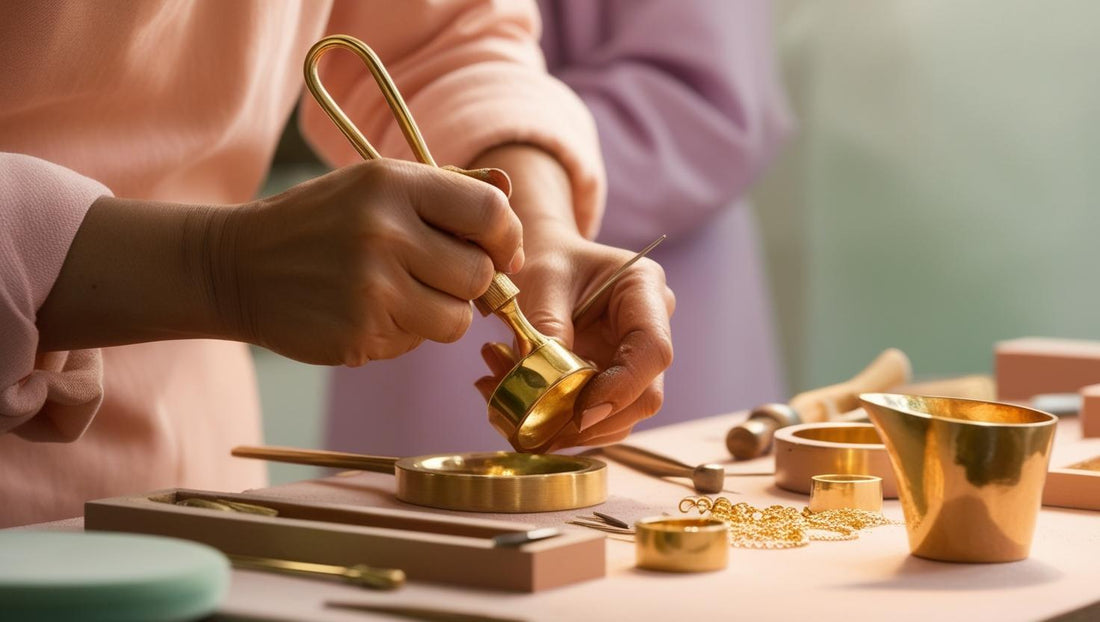
A Golden Guide: Pure Gold vs. Gold-Plated and What Sets Auralys Apart
Gold jewelry comes in many forms, but its quality can differ significantly. By exploring the distinctions between pure gold and gold-plated options, you’ll discover what makes Auralys jewelry exceptional, celebrated for its impeccable design and superior quality.
Pure Gold: A Delicate Beauty
Pure gold, often referred to as 24-carat gold, is a highly prized metal known for its beauty, malleability, and excellent conductivity. However, its softness requires it to be alloyed with other metals like copper, silver, or nickel to make it practical for everyday use, especially in jewelry.
Pure gold jewelry is long life lasting and will not tarnish. However its’ high cost can make it inaccessible to a lot of us.
Gold Plating: A Luxurious, Affordable Alternative
Gold plating is a luxurious and affordable alternative. It involves applying a thin layer of gold to a base metal, such as brass or stainless steel. This process enhances the appearance, durability, and value of the item while keeping the cost significantly lower than solid gold.
When choosing a gold-plated jewelry piece, there are three criteria to consider: carat, thickness and plating technics.
Gold Carat
Carat measures the purity of gold. Common gold carats in jewelry include:
- 24-carat gold: 100% pure gold
- 18-carat gold: 75% pure gold, 25% other metals
- 14-carat gold: 58.5% pure gold, 41.5% other metals
- 10-carat gold: 41.7% pure gold, 58.3% other metals
Gold Plating Thickness (Micron)
The thickness of the gold plating, measured in microns, significantly impacts the durability and appearance of the item. A thicker gold plating layer generally offers better protection and a more luxurious finish. However, it also increases the cost of the item. Gold plating thicknesses can range from 0.03 to 5 microns. Metal base used for jewelry and plating technique will determine the plating thickness required to ensure shining lasting.
Gold Plating Techniques
Now, let's explore the different gold plating techniques:
- Electroplating
Electroplating uses an electric current to deposit gold ions onto a conductive surface. It provides a consistent finish and can be applied to various shapes and sizes. However, this technique involves some chemical processes that can be less environmentally friendly.
- Immersion Plating
For immersion plating, the item is immersed in a gold solution, allowing gold ions to adhere to the surface. The process is simple and suitable for small items. However, the plating is less durable than electroplating and may require more frequent replating.
- Physical Vapor Deposition (PVD)
When using PVD technique, gold is vaporized and deposited onto the surface in a vacuum chamber. This process is extremely durable, resistant to wear and tear, and offers a high-quality finish. However, it is also the more complex and expensive gold-plating process.
You should now be able to make informed decisions when purchasing gold-plated jewelry!
At Auralys, we prioritize exceptional quality.
Our jewelry is crafted from durable stainless steel and plated with 18k gold using the advanced PVD (Physical Vapor Deposition) method.
Stainless steel is hypoallergenic and resistant to skin pH, ensuring your jewelry remains vibrant and free from discoloration (green or pink).
The PVD gold plating process requires only a 0.05-micron gold thickness to achieve a lustrous finish and exceptional durability.
This ensures your Auralys jewelry maintains its brilliance and beauty over time.

